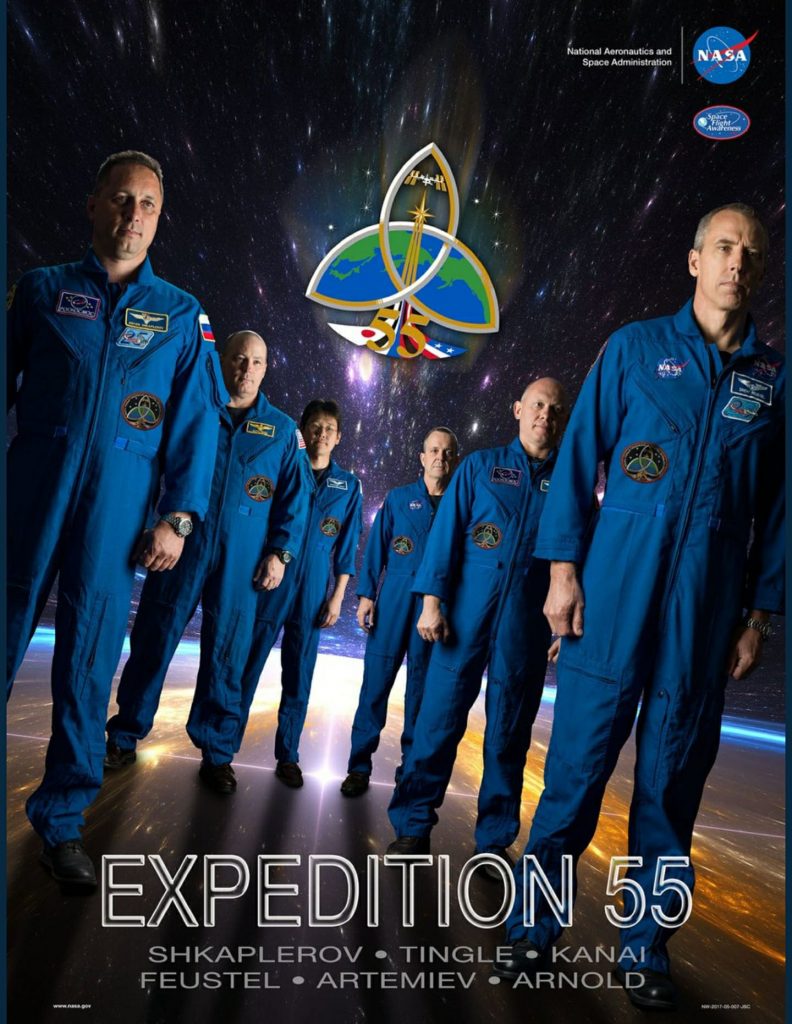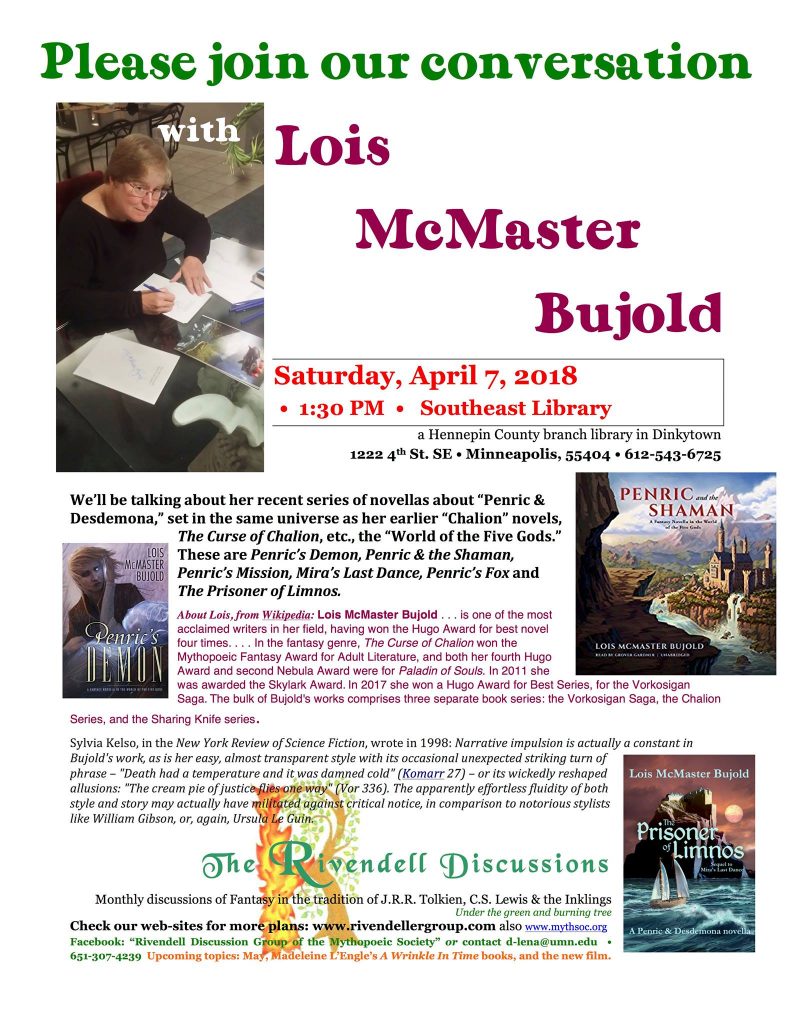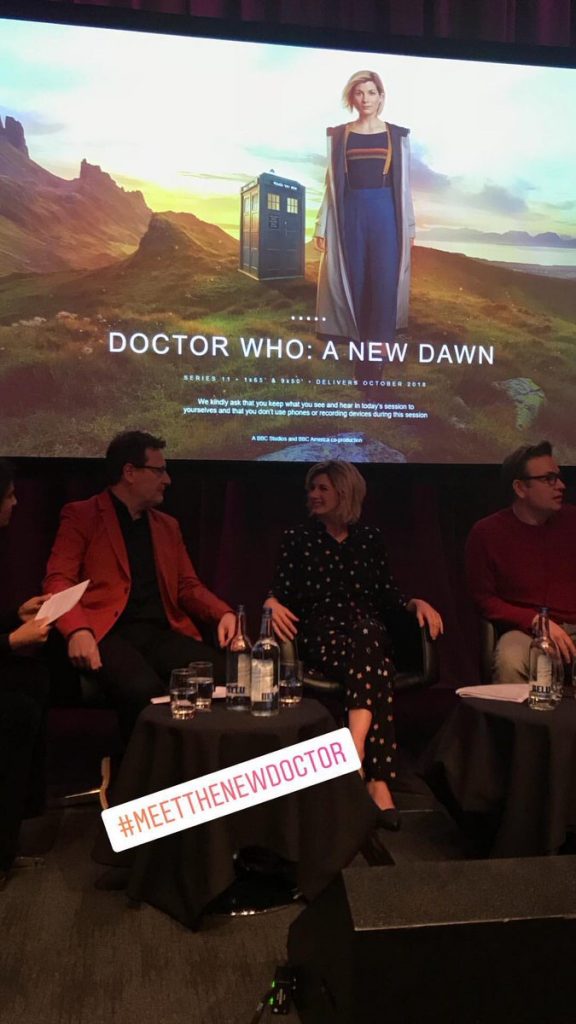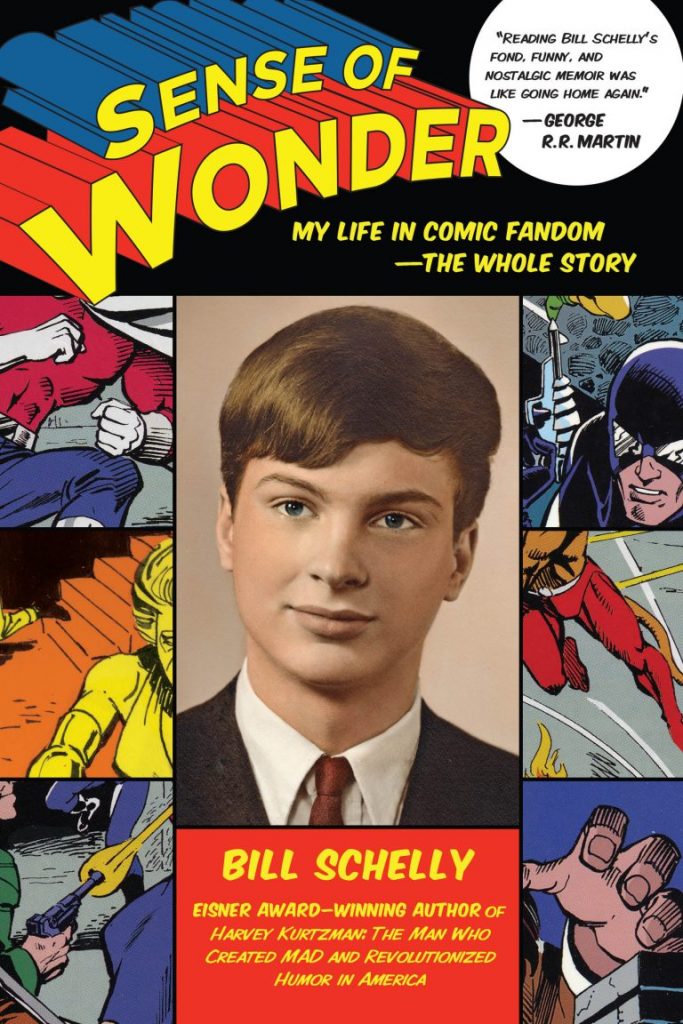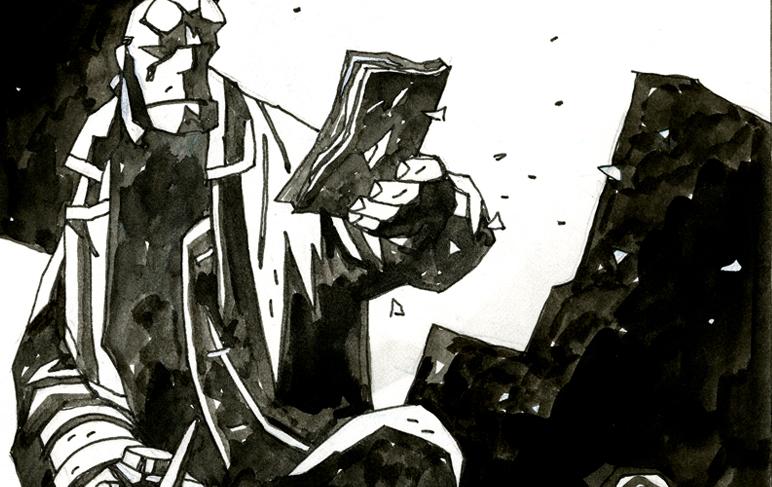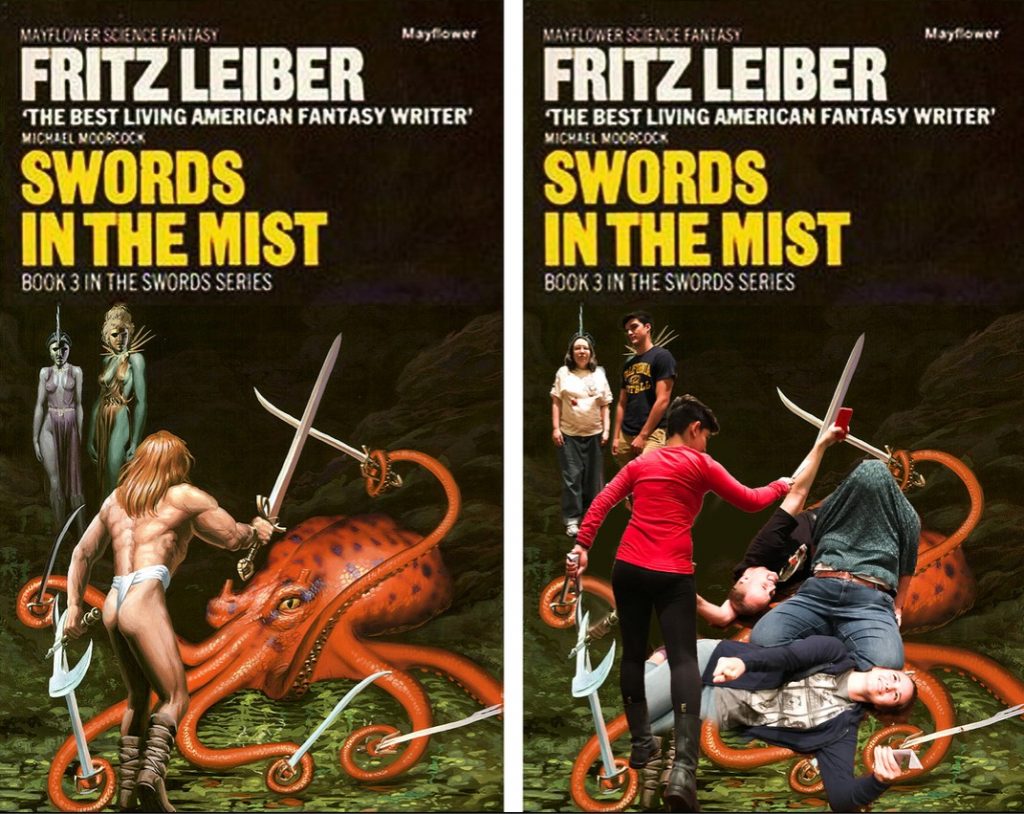(1) BANKS WITH AND WITHOUT THE M. Abigail Nussbaum’s latest column for Lawyers, Guns & Money is “A Political History of the Future: Iain M. Banks”.
In this installment of A Political History of the Future, our series about how science fiction constructs the politics and economics of its future worlds, we discuss the late, great SF author Iain M. Banks, and specifically his Culture series.
Iain M. Banks died in 2013, and his last work of science fiction was published in 2012. In the context of this series, one might even argue that the last book Banks published that is relevant to our interests was Look to Windward (2000), or maybe The Algebraist (2004). There are, however, two reasons to go back to Banks in 2018. The first is that last summer, the University of Illinois Press’s Modern Masters of Science Fiction series (edited by Gary K. Wolfe), which produces short studies about important mid- and late-20th century science fiction authors, published what is to my knowledge the first complete critical study of Banks’s life and work. Iain M. Banks, by the Hugo-nominated British critic Paul Kincaid (by next week we will know whether he’s been nominated a second time for this volume), is both a biography of Banks’s life and his writing career, and an analysis of the themes running through his work. It is essential reading for any Banks fan.
(2) THIS SPACE NOT INTENTIONALLY LEFT BLANK. Farah Mendlesohn’s book about Heinlein now has a title.
One of the comments I’ve frequently made, is that in some ways I have been channelling the great man himself. Verbosity, intemperance, etc etc. But nowhere has this been truer than my inability to come up with a title. Heinlein had a terrible ear for titles. Most of his stories were titled by magazine editors, and most of his adult novels were titled by Virginia. His original title for Number of the Beast, for example, was The Panki-Barsoom Number of the Beast, or even just Panki-Barsoom.
So I did what Heinlein did and outsourced the problem, in this case to many friends on facebook.
And the title is…..
The Pleasant Profession of Robert A. Heinlein.
With a release date in March 2019.
(3) A WAY. In “Mountain and Forest” Nick Stember analyzes “the Tao of Ursula K. Le Guin.”
For science fiction fans, the fact that The Left-Hand of Darkness owes a debt of inspiration to Taoism is nothing new, of course. As early as 1974 Douglas Barbour was pointing out parallels in Le Guin’s earlier books in the Hainish cycle, and Le Guin herself said as much in interviews. Perhaps more surprising is the fact that Le Guin’s last novel in the Hainish cycle, The Telling, was directly inspired by the Cultural Revolution:
I learned that Taoist religion, an ancient popular religion of vast complexity and a major element of Chinese culture, had been suppressed, wiped out, by Mao Tse-tung…In one generation, one psychopathic tyrant destroyed a tradition two thousand years old…And I knew nothing about it. The enormity of the event, and the enormity of my ignorance, left me stunned.
(4) SUSPICION. The authorities spent the day grilling two writers:
Detective: So Ms. Rowland… Where were you on the night of May 17th?
Me: A-at home.
Detective: Was that when you made your decision to get these two characters FAKE MARRIED?
Me: I WANT TO SPEAK TO MY LAWYER— Alexandra Rowland (Newsletter link in bio) (@_alexrowland) March 26, 2018
(5) DON’T BOTHER ME BOY. And yet they let this one go Scot-free! Richard Paolinelli, borrowing a page from Lou Antonelli’s book – the one printed on a thousand-sheet roll – tried to embroil Camestros Felapton with the Aussie cops:
Richard this is something you’ll need to take to your local police. Gather your evidence first – they can investigate. All the best.
— AFP (@AusFedPolice) March 26, 2018
(6) PRO TIP. This is the way professional writers handle feedback, says Cole McCade in “The Author’s Guide to Author/Reviewer Interactions”. Strangely enough, calling the cops isn’t on his list.
B-but…I read a bad review of my book!
Then stop reading your goddamn reviews.
…all right. Okay. I know you won’t. I still read my reviews sometimes, I just don’t talk about it. And I generally try to stay on the positive ones; they’re a good pick-me-up. Even those, though, I don’t talk about.
That’s the thing. You can read reviews all you want, but you can’t engage with them save for in very specific circumstances. Don’t like a review on GoodReads. Don’t flag it for removal unless it actually meets the guidelines, such as posting derogatory things about you as a person/author rather than reviewing the book. Don’t comment on the review. Don’t send your fans to comment on the review defending you. (I actually have a policy in my street team that anyone caught attacking negative reviewers gets booted from the group.) Don’t seek out tweets about your book and reply to them (particularly if you or the book aren’t mentioned by name; if you’re stalking reviewers on social media for the idlest sideways mention of your book, that’s fucking creepy and intrusive). If you happen to have friendly conversations with a reviewer, do not bring up their review or try to chat about it.
You know why?
Because reviews are not for you.
They’re for other readers.
(7) EXPLOITATION. At the SFWA Blog, John Walters is irate about “The Egregious Practice of Charging Reading Fees” – although his examples are from outside the sff field —
The sad state of affairs in the field of literary magazines is that a high percentage now charge reading fees. The amounts range from two dollars to five dollars or more, but the average is three dollars. They justify it in all sorts of ways. Some, to avoid the stigma of charging reading fees, call it a handling fee or a software fee. Evidently they haven’t heard that many email services are free. Some, even as they ask it of writers, say outright: This is not a reading fee. Yeah, right. As if calling it by another name makes it all better. Several sites explain that if you were to send the manuscripts by mail you would have to spend at least that much in postage, so send that postage money to them instead. Most modern magazines and anthologies are getting away from postal submissions anyway, both as a money saver and to protect the environment, so that argument doesn’t make any sense.
(8) BSFATUBE. The British Science Fiction Association’s publication Vector has branched out to producing YouTube videos. Here’s the first one:
Glasgow-based DJ Sophie Reilly, aka ‘Sofay’, talks about her love of science fiction and the connections that exist between some of her favourite records and novels such as Ursula Le Guin’s ‘The Left Hand of Darkness’ and Stanislaw Lem’s ‘Solaris’…
(9) CARRINGTON OBIT. Actress Debbie Lee Carrington has died at the age of 58:
She began her acting career in 1981, appearing in the Chevy Chase-starring comedy, Under the Rainbow. Later, Carrington landed a role in Return of the Jedi, famously playing the Ewok who consoles another Ewok that was blown up by a landmine. She ended up starring in The Ewok Adventure and Ewoks: Battle for Endor as Weechee, Wicket’s older brother. Carrington was also an advocate for the rights of people with disabilities in Hollywood and also had a degree in child psychology, which earned her much respect in the industry along with her giant body of work. Mike Quinn, who worked with Debbie Lee Carrington on Return of the Jedi, had this to say.
“So sad to hear of the passing of a fellow Return Of The Jedi performer Debbie Lee Carrington. She was an advocate for actors with disabilities and had a degree in child psychology. She had done so much, not only as an Ewok but was inside the costume for Howard The Duck, appeared in Total Recall, Grace & Frankie, Dexter, Captain Eo, the list goes on… Way too young. She was a real powerhouse! My condolences to all her family and friends at this time.”
(10) CAMERON OBIT. SF artist Martin G. “Bucky” Cameron died unexpectedly on March 26.
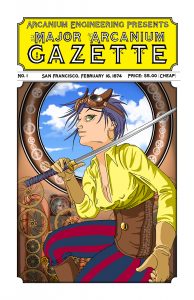 For over 35 years he worked as a professional artist. He was the first 3D artist at the Lucasfilm games division. Other game companies he worked for included NAMCO, Broderbund, and Spectrum Holobyte. He also did art for magazines including Analog and Penthouse, and for myriad companies.
For over 35 years he worked as a professional artist. He was the first 3D artist at the Lucasfilm games division. Other game companies he worked for included NAMCO, Broderbund, and Spectrum Holobyte. He also did art for magazines including Analog and Penthouse, and for myriad companies.
His recent project was creating a shared Steampunk world with Robert E. Vardeman. The first issue came out in February.
MT Davis adds, “Martin was usually known as ‘Bucky’ at the Cons he attended and was part of the Sacramento/Bay Area Fan nexus that went into the computer Gaming industry as it rose in the late 80’s early 90’s. Very congenial and always cordial accepting of almost all.”
(11) TODAY’S YESTERDAY’S DAY
It’s Tolkien Reading Day!
Tolkien Reading Day is held on the 25th of March each year.
It has been organised by the Tolkien Society since 2003 to encourage fans to celebrate and promote the life and works of J.R.R. Tolkien by reading favourite passages. We particularly encourage schools, museums and libraries to host their own Tolkien Reading Day events.
Why 25 March?
The 25th of March is the date of the downfall of the Lord of the Rings (Sauron) and the fall of Barad-dûr. It’s as simple as that!
(12) TODAY IN HISTORY
- March 26, 1985 – Outer Limits was reincarnated for TV.
- March 26, 1989 – Quantum Leap made its TV premiere.
- March 26, 2010 – Hot Tub Time Machine appeared in theaters.
(13) TODAY’S BIRTHDAY BOY
- Born March 26, 1931 – Leonard Nimoy
(14) TODAY’S BIRTHDAY VACCINE
On March 26, 65 years ago, Dr. Jonas Salk announced he had successfully tested a vaccine against polio. Look back at Dr. Salk’s achievement.
Alan Baumler comments, “If you are wondering ‘Who is the model for the heroic scientist who saves the world?’ as seen in thousands of SF stories, it is probably him.”
From the Wikipedia:
Author Jon Cohen noted, “Jonas Salk made scientists and journalists alike go goofy. As one of the only living scientists whose face was known the world over, Salk, in the public’s eye, had a superstar aura. Airplane pilots would announce that he was on board and passengers would burst into applause. Hotels routinely would upgrade him into their penthouse suites. A meal at a restaurant inevitably meant an interruption from an admirer, and scientists approached him with drop-jawed wonder as though some of the stardust might rub off.”
For the most part, however, Salk was “appalled at the demands on the public figure he has become and resentful of what he considers to be the invasion of his privacy”, wrote The New York Times, a few months after his vaccine announcement.
(15) CAPTAIN MY CAPTAIN. Not much about superhero movies has to make logical sense, but there’s an odd reason why this development does. Inverse reports that “‘Captain Marvel’ Will Bring Back Two ‘Guardians of the Galaxy’ Villains” who audiences have already seen killed off.
Captain Marvel may be the 22nd movie in the Marvel Cinematic Universe, but thanks to its Nineties setting, it’s chronologically the second film in the series, following Captain America’s World War II setting. That means that MCU characters who died in recent movies would still be alive during Captain Marvel’s time, and Marvel revealed on Monday that three somewhat unexpected deceased characters will be appearing in the upcoming film.
In a posting announcing the start of principal photography on Captain Marvel, starring Brie Larson as the titular hero, Marvel announced that Djimon Hounsou, Lee Pace, and Clark Gregg would all make appearances in the upcoming film. Hounsou and Pace played Guardians of the Galaxy villains Korath the Pursuer and Ronan the Accuser, respectively, while Gregg played the beloved Agent Coulson in the MCU’s Phase One (and continues to play the character on the TV show Agents of S.H.I.E.L.D.)
(16) OH BRAVE NEW WORD. Tor.com’s Emily Asher-Perrin investigates “What We Mean When We Call Something ‘Shakespearean’”.
It does seem a term that falls into two categories: (a) a term used to denote high quality, or (b) a term used to denote a certain type of story. Sometimes it is used to indicate both of these things at the same time. But we see it everywhere, and often reapplied past the point of meaning. When Marvel Studios released the first Thor film in 2011, it was heralded as Shakespearean. When Black Panther was released earlier this year, it was labeled the same. Why? In Thor, the characters are mythological figures who speak in slightly anachronistic dialects, and family drama is the three-dollar phrase of the hour. Black Panther also contains some elements of family drama, but it is primarily a story about royalty and history and heritage.
So what about any of this is Shakespearean?
(17) APOSTLE TO THE CURMUDGEONS. What do Ambrose Bierce and the fashion magazine Cosmo have in common? Doctor Strangemind’s Kim Huett says you might be surprised: “Ambrose Bierce Buries Jules Verne”.
In Cosmopolitan Magazine, Vol. XL No. 2, December 1905 [Bierce] reacted to what he considered to be a hagiographic response to the death of Jules Verne:
The death of Jules Verne several months ago is a continuing affliction, a sharper one than the illiterate can know, for they are spared many a fatiguing appreciation of his talent, suggested by the sad event. With few exceptions, these “appreciations,” as it is now the fashion of anthropolaters to call their devotional work, are devoid of knowledge, moderation and discrimination. They are all alike, too, in ascribing to their subject the highest powers of imagination and the profoundest scientific attainments. In respect of both these matters he was singularly deficient, but had in a notable degree that which enables one to make the most of such gifts and acquirements as one happens to have: a patient, painstaking diligence—what a man of genius has contemptuously, and not altogether fairly, called “mean industry.” Such as it was, Verne’s imagination obeyed him very well, performing the tasks set for it and never getting ahead of him—apres vous, monsieur. A most polite and considerate imagination, We are told with considerable iteration about his power of prophecy: in the “Nautilus,” for example, he foreshadows submarine navigation. Submarine navigation had for ages been a dream of inventors and writers; I dare say the Egyptians were familiar with it…
(18) STOKERS. The Horror Writers Association has posted video of the 2018 Bram Stoker Awards ceremony held at StokerCon in Providence, RI on March 3.
(19) ROBO PUNCHING. NPR’s Glen Weldon, in “‘Pacific Rim Uprising’ serves up another helping of mech and cheese”, holds a mock press conference:
REPORTER #1: … and then we clucked our tongues, the way we do, and sat there a while basking in our keenly developed aesthetic sense. Then we got to wondering who in the world would ever actually see it.
CRITIC: I mean … you shouldn’t.
REPORTER #1: So you agree. (Cluck.)
CRITIC: Do I agree that you shouldn’t see it? I very much do. I mean, listen to yourself. You expressly do not count yourself among the cohort of giant-robots-fight-giant-monsters potential filmgoers, safe to say. So clearly you shouldn’t see it. I mean … I would have thought that was obvious. Unless … I’m sorry, is someone forcing you to go see it? Are there armed gangs of street toughs employed by Universal Studios going house-to-house and frog-marching the hapless citizenry into Pacific Rim Uprising showings across this nation?
REPORTER #1: No. Look, I’m just sayi-
CRITIC: Yes, you are just saying, not asking, and I’m here to answer questions about the film Pacific Rim Uprising. This is not a forum for your smug condemnation of the fact that a given piece of popular culture is popular. This is a press conference, not Facebook. Security, kindly remove this person. Next question. Yes, you there….
Chip Hitchcock calls it, “Much kinder than the Boston Globe’s response: ‘If only they hadn’t made a movie that plays like a lost “Transformers” entry.’”
(20) RESISTANCE IS RUTILE. Got to love this. On Quora Nyk Dohne answers the question “Would a Borg Cube be any match for a Star Destroyer if the two ever met in battle?”
Here is what clearly will happen: The Borg beam over some scouts to investigate. Because the Death Star is so huge, let’s say it is only a few dozen scout Borg. Stormtroopers try to repulse them, and 2 Borg are killed before they adapt and become quite invulnerable. The Death Star predictably uses the superlaser to destroy the Borg Cube, which doesn’t have a chance to adapt because it is all over in one shot. Only a few components of the cube survive re-entry as they scatter and fall on the nearby forest moon; all the Borg humanoids are dead. All? Not quite: There are still a few dozen (-2) Borg on the Death Star. Those few dozen quickly begin Assimilating the Death Star and it’s crew. Because the Death Star is so huge, it takes a LONG time, but the Imperials are not known for the innovative tactics required to stop the onslaught. The battle lasts for months, but it is unstoppable. The Borg grows exponentially, despite reinforcements….
And Nyk goes on from there.
[Thanks to Mark Hepworth, Martin Morse Wooster, John King Tarpinian, MT Davis, JJ, Cat Eldridge, Chip Hitchcock, Alan Baumler, Michael Toman, Andrew Porter, and Carl Slaughter for some of these stories. Title credit goes to File 770 contributing editor of the day Jayn.]


